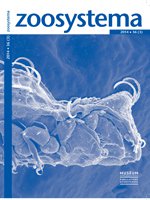The Cameroon volcanic line (CVL), which represents a major topographical feature of Central Africa, is poorly known concerning its small-mammal biodiversity. Situated in the Bamenda-Banso highland plateau, Mt Oku is the second highest peak (3011 m) of the CVL after Mt Cameroon. Despite intensive cultivation and cattle grazing, especially in the Kilum-Idjim zone, Mt Oku has retained some relict mountain forests, which yielded many endemic small mammals. We conducted new taxonomic inventories for small mammals and present the results for rodents focussing on morphology and morphometry. We also present the skull characters and morphological variability of the Oku endemic genus Lamottemys Petter, 1986 and provide characters for the identification of other endemic species such as Otomys occidentalis Dieterlen & Van der Straeten, 1992, Praomys hartwigi Eisentraut, 1968, Paraxerus cooperi Hayman, 1950, Lophuromys dieterleni Verheyen, Hulselmans, Colyn & Hutterer, 1997 and Lemniscomys mittendorfi Eisentraut, 1968. We provide an update of the faunal list of Mt Oku and also include a revision of previous collections. We found an exceptional diversity of 26 rodent species, including two species never recorded before on Oku (Dendromus sp. Smith, 1829 and Funisciurus leucogenys F. Cuvier, 1842). A comparison with East African highlands and Mt Cameroon confirms the conservation importance of the West African mountains of the CVL as biodiversity hotspots.
How to translate text using browser tools
1 September 2014
African highlands as mammal diversity hotspots: new records of Lamottemys okuensis Petter, 1986 (Rodentia: Muridae) and other endemic rodents from Mt Oku, Cameroon
Christiane Denys,
Alain Didier Missoup,
Violaine Nicolas,
Olaf Fülling,
Arnaud Delapré,
Charles Felix Bilong Bilong,
Peter John J. Taylor,
Rainer Hutterer
ACCESS THE FULL ARTICLE
It is not available for individual sale.
This article is only available to subscribers.
It is not available for individual sale.
It is not available for individual sale.

Zoosystema
Vol. 36 • No. 3
September 2014
Vol. 36 • No. 3
September 2014




